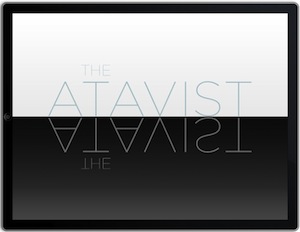 Atavist, publisher of both technology and ebook-esque stories, is taking a cue from the world of magazines and newspapers by getting into the subscription business.
Atavist, publisher of both technology and ebook-esque stories, is taking a cue from the world of magazines and newspapers by getting into the subscription business.
Starting today, readers can sign up for a three-month subscription for $6.99 through The Atavist app, which will give customers access to newly released multimedia stories as well as material from its archives.
You may note that we called the company “Atavist,” not The Atavist, the name it debuted under in 2011. There’s been a split in nomenclature: The company is now just Atavist. The publication/app/marketplace/producer-of-narrative-stories is The Atavist. Actually, The Atavist in their styling, like a magazine. It’s a nice external marker of the company’s shift into being a technology platform that happens to publish stories, rather than a publisher of stories that happens to have some technology. Atavist’s website refers to The Atavist as “our flagship publishing arm — built on our own platform.”
Atavist is basing its future on blurring the lines between being a publisher and a technology maker. They partner with authors to produce stories packed with multimedia, while selling their technology to allow other publishers to produce the stories on their own. But subscriptions are a kind of old school idea, and getting a subscription to The Atavist is different than a subscription to Sports Illustrated or The Washington Post. What you get when you sign up with The Atavist is a brand — not a daily news source, not stories on a particular subject area, not even a consistent masthead of writers. Atavist CEO Evan Ratliff told me it’s about capturing readers who are drawn to a new kind of immersive, engaging, narrative journalism.
“We suspect that a good portion of our readers just like this kind of work. People come to us on Kindle, or in-app, or are interested in one title,” he said. Ratliff said The Atavist has reached a point where they have a somewhat regular publishing schedule, which, combined with access to their archives, could be a good incentive to subscribe.
Just as with the individual stories The Atavist sells, subscriptions are available as an in-app purchase in its apps. Authors will still get a cut, even if subscribers aren’t paying for a specific story; at the end of each month, subscription money will be divvied up based on the number of downloads for each individual author.
The company has published 18 original stories so far, and is releasing a new title today, “Agent Zapata” by Mary Cuddehe, which looks into the killing of Jaime Zapata, an Immigration and Customs Enforcement agent killed by a drug cartel in Mexico.
The company, which received a round of venture funding earlier this year from people like Google’s Eric Schmidt, generates revenue off sales of titles as well as the Atavist publishing platform, which counts TED and The Paris Review as clients. Subscriptions would add to that a more consistent flow of dollars, thanks to Apple’s automatic renewal system. “It’s an ongoing source of revenue, opposed to selling each title individually, which we’ve been successful at,” Ratliff said. “But why not do both?”
Subscriptions have been on the company’s radar for some time. Ratliff told me subscription functionality was also built into the Atavist platform to allow other publishers the ability to sell subscriptions to their work. TED Books, for example, gives readers the choice of $14.99 for a three-month subscription, or $2.99 for individual books.
Ratliff said offering subscriptions fits into their larger idea about providing access to this new breed of stories in whatever shape or form readers want. That means creating stories that can cross between iBooks, Kindle, and Nook, but also changing up delivery options. “I think our philosophy has been that we don’t really care how we reach the reader — we just want to reach readers,” he said. “We have stories to tell and we want to find the readers.”